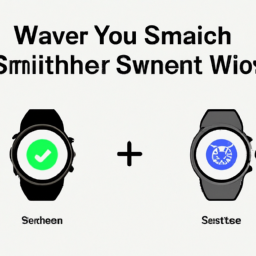Smartwatch for Kids vs Traditional Watches: Which Is Better for Your Child?
As technology advances, parents are increasingly weighing the pros and cons of a smartwatch for kids vs the more classic option of a traditional wristwatch. With children today growing up in a digital world, it’s important to understand how each option supports their safety, learning, and independence. This guide will help you make an informed decision by comparing features, benefits, and potential drawbacks of both types of watches for children.
Understanding the Basics: What Is a Smartwatch for Kids?
A kids’ smartwatch is a wearable device specifically designed for children. Unlike adult smartwatches, these devices typically focus on safety, communication, and simple entertainment. Most smartwatches for children come with GPS tracking, calling capabilities, educational games, and even fitness tracking to encourage healthy habits.
Traditional watches, on the other hand, are classic timepieces with analog or digital displays that simply tell time, sometimes featuring alarms or stopwatches.
Feature Comparison: Smartwatch for Kids vs Traditional Watches
| Feature | Smartwatch for Kids | Traditional Watch |
|---|---|---|
| Time Display | Digital, customizable faces | Analog or digital |
| Communication | Calls, messaging, voice chat | None |
| GPS Tracking | Yes, real-time location | No |
| Educational Features | Games, reminders, learning apps | No |
| Fitness Tracking | Step counter, activity monitor | Rarely |
| Parental Controls | App management, location alerts | No |
| Battery Life | 1-7 days | Months to years |
| Durability | Water-resistant, shockproof models | Very high, especially analog |
Advantages of Smartwatches for Kids
- Safety and Peace of Mind: GPS tracking and SOS buttons let parents know their child’s location and help them contact guardians in emergencies.
- Communication: Two-way calling and voice messaging allow kids to stay in touch without needing a smartphone.
- Educational Value: Many children’s smartwatches offer interactive games that foster learning and time management skills.
- Fitness Motivation: Step counters and activity reminders encourage kids to stay active.
- Customizable Features: Changeable watch faces, alarms, and reminders let children express their personalities and manage their routines.
Benefits of Traditional Watches for Kids
- Durability and Reliability: Simpler mechanisms mean fewer parts that can break, making them ideal for active children.
- Battery Life: No need for daily charging; some analog watches last years.
- Learning Opportunity: Helps young kids learn to tell time on an analog display, a valuable life skill.
- Affordability: Basic models are often less expensive than smartwatches.
- No Distractions: Without games or messaging, children are less likely to be distracted during school or homework.
Potential Drawbacks: Smartwatches vs Analog Watches for Kids
Smartwatch for Kids
- Shorter battery life—requires regular charging
- Potential for distraction due to games or messaging
- Higher upfront cost
- Possible privacy concerns if not properly secured
Traditional Watch
- Lacks modern safety features like GPS or emergency calls
- No way to communicate with parents if needed
- Limited appeal for tech-savvy children
- Few customization options
How to Choose: Key Factors for Parents
- Child’s Age: Younger children may benefit more from smartwatches with GPS, while older kids might appreciate a classic watch’s simplicity.
- Purpose: Are you most concerned about safety, teaching time, or encouraging independence?
- Budget: Consider both the upfront cost and potential long-term value.
- Parental Involvement: Smartwatches often need parental setup and monitoring.
- School Policies: Some schools restrict electronic devices, so check their rules before purchasing.
Frequently Asked Questions: Smartwatch for Kids vs Regular Watch
- Is a smartwatch safe for kids?
- Most GPS smartwatches for kids are designed with privacy controls and parental monitoring. Choose reputable brands and set up security features.
- Can my child use a smartwatch at school?
- It depends on the school’s policy. Some allow simple watches but may restrict smart devices to avoid distractions.
- Do smartwatches for kids require a SIM card?
- Many models need a SIM card for calling and messaging. Some only work when connected to Wi-Fi or a paired smartphone.
- At what age should a child get a smartwatch?
- Most experts recommend ages 6-12, depending on maturity and family needs.
- Are there waterproof smartwatches for children?
- Yes, many are water-resistant or splash-proof, perfect for active kids.
Conclusion: Which Is the Best Watch for Your Child?
Choosing between a smartwatch for kids vs traditional watch depends on your child’s needs, your family’s lifestyle, and your personal preferences. For parents prioritizing safety, connectivity, and education, a kids’ smartwatch is often the best choice. However, for simplicity, affordability, and helping kids learn to tell time, nothing beats a classic analog or digital watch.
Whichever option you choose, ensure it matches your child’s personality and your family’s values. Both types of watches can be a meaningful first step towards independence and responsibility.



